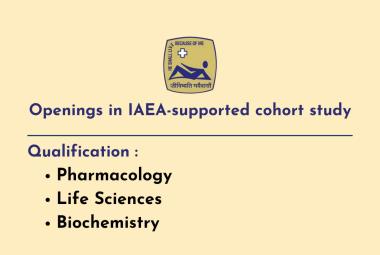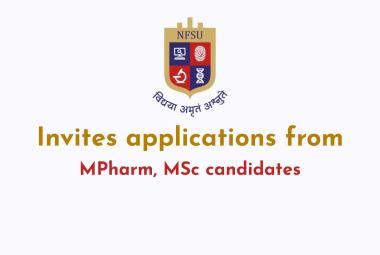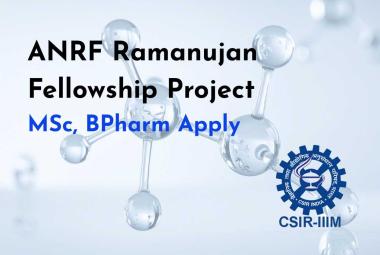About Authors:
Dharmendra Kumar*, BhanuPriya, S.K Gupta
*Department of Pharmaceutical Technology,
Meerut Institute of Engineering and Technology,
Meerut, Uttar Pradesh, India, 250005
*rvnimiet@gmail.com
Abstract.
The aim of this research work was replaced the tablet or injection of Domperidone by using domperidone nasal gel forrmulations. In research, day to day newer novel drug delivery comes for various drugs nasal gel drug delivery system one of them. Purpose of this study is formulating a nasal gel of Domperidone by using natural mucoadhesive agent extract from Dellinia Indica. In vitro drug release study carried out by using Franz-diffusion cell and excised bovine nasal membrane,characterisation was also found to be better in comparison to the HPMC and carbapolsynthetic polymers. Dellinia indica has valuable properties as a mucoadhesive agent because it is considered to be biocompatible, biodegradable and non-toxic. In future nasal gel formulations replace tablet/injection of Domperidone.
REFERENCE ID: PHARMATUTOR-ART-1745
Introduction:
Mostly domperidone used as tablet or injection, but now a novel drug delivery system has been developed for Domperidone as nasal gel formulation. Because it provides patient compliance, easy to administration, bypass first pass metabolism, excellent penetration, low dose required, and rapid absorption and gives desirable effects. So many times nasal drug delivery has been considered as alternative of parenteral route. [1, 2, 3]
In that formulation mucoadhesive agent extracted from Dellinia indica. The potential use for mucoadhesive systems as drug carriers lies in its prolongation of the residence time at the absorption site, allowing intensified contact with theepithelial barrier [4]. On the other hand, adhesion of preparations onto mucous membrane can be impaired by the mucociliary clearance system. This clearance, a natural defence mechanism of the body against the deposition of impurities onto the mucous membrane, can also remove the preparation. Thus, by using bioadhesivemolecules, it is possible to retain the preparation at the action site and to direct the drug to a specific site or tissue.Other features associated with the development of controlled drug delivery systems using bioadhesive molecules include a decrease in drug administration frequency and an increase in patient compliance to the therapy [5]. Therefore, a bioadhesive system controlling drug release could improve the treatment of diseases, helping to maintain an effective concentration of the drug at the action site [6].
Mucosal membranes of human organism are relatively permeable and allow fast drug absorption [7, 8]. They are characterized by an epithelial layer whose surface is covered by mucus. The mucus contains glycoproteins, lipids, inorganic salts and 95% water by mass, making it a highly hydrated system. Mucin is the most important glycoprotein of mucus and is responsible for its structure.
Domperidone is a dopamine D2 receptor antagonist and is used as a pro-kinetic agent for treatment of upper gastrointestinal motility disorders (9). After oral administration, Domperidone is rapidly absorbed from the stomach and the upper part of the gastrointestinal tract (GIT) with fewer side effects. It is a weak base with good solubility in acidic pH but significantly reduced solubility in alkaline medium (10, 11, 12).
MATERIALS AND METHODS
Materials
Chemicals:
Domperidone, acetone and other required materials provide by department of pharmaceutics MIET Meerut.
Plant material:
The Dellinia fruits were purchased from local market, Ghanghauli, Super Noida, India. The seeds were identified and authenticated by MIET Meerut.
Methods
Extraction of Mucoadhesive Agents from the Fruits of D. Indica L. [1,13]
Dellinia fruit mucilage was extracted following the methods of Rao et al. with little modifications. 500 g of Dellinia fruit was soaked in double distilled water and boiled under stirring condition in a water bath until thick slurry was produced. This solution was cooled and kept in the refrigerator overnight so that the un-dissolved portion settles. The upper clear solution was decanted and centrifuged at 500 rpm for 20 min. The supernatant was separated, concentrated at 60ºC on a water bath until the volume was reduced to onefourth of its original volume, and cooled to roomtemperature. The concentrate was poured into thricethe volume of acetone with constant stirring. Theprecipitate was washed repeatedly with acetone, collected, and dried at 50 – 60ºC under vacuum for 12 hours. The dried material was powdered, passed through 80-mesh screen and stored in a desiccator until used.
Determination of pH
The pH of a 1% w/v solution of the dellinia fruit extract (DFE), HPMC and Carbopol 934 was measured using a Toshcon pH meter.
Measurement of Viscosity
Viscosity measurements were carried out at1%w/v concentration of DFE; HPMC and Carbopol 934 using Toki Sangyo Viscometer TV-10.
Assessment of Mucoadhesive Properties
The mucoadhesive property of DFE was determined by the Shear stress method [12] and the Park and Robinson method [13], and the results were compared with synthetic polymers. In this study, 0.5% w/v and 1% w/v solutions of the polymers were used for the shear stress method and the Park and Robinson method respectively.
Preparation of the Nasal Gel [1]
Nasal gels were prepared using natural and synthetic mucoadhesive polymers at its optimum concentrations as determined by viscometric studies. The materials were dissolved in a measured volume of nasal solution (0.65% NaCl, 0.04% KH2PO4, pH 6.2, 0.09% K2HPO4and 0.02% benzalkonium chloride). The contents were sonicated using Pci Ultrasonic cleaner for 10 min and stirred in a magnetic stirrer for 15 min. The whole content was sealed and stored in the refrigerator overnight to allow complete swelling. An aliquot amount of Domperidone was added and stirred again for 15 min. The prepared gel was sonicated to ensure the complete removal of air bubbles. Similarly gels were prepared using different enhancers.
Preparation of excised epithelial tissue from nasal mucosa:
Bovine nasal mucosa was obtained from the local slaughterhouse. After removing the skin, the nose was stored on ice in buffer solution during transport to the laboratory [14]. The septum wall was fully exposed by a longitudinal incision through the lateral wall of the nose. The septum mucosa was carefully removed from the underlying bone by cutting along the whole septum and pulling the mucosa off the septum with homeostatic forceps. The cavity mucosa was also carefully removed from the conchae and lower cavity using homeostatic forceps after exposing the cavity each side of the septum. The mucosal tissues were then immediately immersed in Ringer’s Solution.
Release studies of drug from gel:
The franz diffusion cell [1, 15, 16] was used for the drug release study. The diffusion chamber with an exposed tissue surface area of 2.54cm2 is filled with 100 ml of phosphate buffer solution of pH 6.0. The excised nasal mucosal membrane was secured over the mouth of the upper tube keeping mucus side exposed to gel. For equilibration the mucosae were Pre-incubated with preheated buffer for ~30 min. Domperidone containing gel (1mg/ml) placed on the membrane were dispersed in 100 ml of phosphate buffer solution of pH 6.0 and stirred at a constant rate by a PTFE-coated magnetic bar at 600 min-1. Cells were kept under a constant oxycarbon flow (95% O2, 5% CO2). Throughout the studies the buffer solution in the chamber was maintained at 37°C connecting the franz diffusion cell with water bath. At pre-determined period of time 1ml of sample was taken and simultaneously replaced with same volume of pre-warmed (37°C) fresh buffer solution. The collected samples were diluted suitably and drug concentration estimated using Spectrophotometer.
RESULTS AND DISCUSSIONS.
Determination of pH
The pH of DFE was in the range of 5.8 to 6.8, whereas the pH of HPMC and carbopol 934 were 6.2 and 3.5, respectively. As the pH of nasal mucosa varies between 5.5 and 6.5, DFE was found to be suitable for preparing nasal gels.
Measurement of Viscosities
Results of the viscosity measurements of 1% w/v solutions of DFE, HPMC and Carbopol are shown in Fig 1. The viscosity of DFE ranges from 10-14cPs while that of HPMC and Carbopol 934 was 1.2-2.8 cPs and 5.5-7.1 cPs, respectively. Thus the viscosity of the DFE was more than that of the synthetic polymers.

Fig 1. Viscosity of the 1% w/v solutions of the natural mucoadhesive extract DFE and the synthetic polymers HPMC and carbopol934 . Experimental temperature was maintained at 37±1 °C. Values are expressed as the mean of 6 observations.
Assessment of Mucoadhesive Properties
The results of the mucoadhesive property wererecorded for various polymers with different contacttime (Fig 2 & 3). It is observed that increased contacttime increased the adhesion strength allowing for more adhesion14. Probably increasing contact time might have reduced the hydration due to evaporation facilitating higher adhesion15. The results showed that DFE, having high molecular weight and high viscosity, exhibited higher adhesion and better mucoadhesive property in comparison to the synthetic polymers (HPMC and carbopol 934) at the same concentration. This may be due to the presenceof numerous disulphide bridges and carboxyl and hydroxyl groups, which adopt more favourable macromolecular conformation, and accessibility of its hydrogen-binding groups, when compared with other polymers. HPMC, being a cellulose derivative, formed weaker bonds with mucus, which may be due to either a decrease in available hydrogen binding sites or unfavorable entanglement with the mucus.
By Shear stress method

Fig 2.Mucoadhesive property of the 0.5% w/v solutions of the natural mucoadhesive extract DFE and the synthetic polymers HPMC and carbopol 934 as determined by shear stress method. Experimental temperature was maintained at 37±1 °C. Values are expressed as the mean of 6 observations.
By Park & Robinson method :

Fig 3.Comparative result of mucoadhesive property of the natural mucoadhesive extract (DFE) with synthetic polymers HPMC and carbopol 934 by Park & Robinson method. All the polymers used in 1% w/v solution. Experimental temperature was maintained at 37°C±1. Values are expressed as the mean of 6 observations.
In-vitro release study:
It was observed that 100% drug was released in case of natural mucoadhesive agent (tamarind) containing domperidone within 11-12 hours. (Fig. 4).

Conclusion:
Conclusion was reached that mucoadhesive agent extract from dellinia indica seed more suitable at low concentration than other mucoadhesive agent such as Carbapol, HMC. Natural mucoadhesive agent is edible; it is easily biodegradable and non-allergic like many synthetic agents used for similar purpose. Domperidone is given in the form of injection or tablet to many patients in hospitals and nursing homes. But these are not suitable due various factors such as first pass metabolism; clearance etc. and nasal gel formation is the best formulation for anti-emetic domperidone. This work will definitely add a new dimension to newer drug delivery systems that is nasal gel drug delivery system. So in future for domperidone tablet or injection will not require nasal gel gives sufficient absorption with very low toxic effect.
Acknowledgement
I (Dharmendra Kumar) convey my special thanks right from the bottom of the heart to prof. S.K Gupta Director pharmaceutical Technology, M.I.E.T.,Meerut. I am also thankful to Dipinkaushik (pfizer), and Guru Mandela ghanghauliwho assisted me a lot while carrying out the practical works.
References.
1.Kuotsu ketousetuo and Bondyopadhyay A.K. development of oxytocin nasal gel using natural mucoadhesive agent obtained from fruits of Dellinia indica. L. science Asia 2007 pp.57-60
2.DattaRimi, bandyopadhyay A.K. development of a new nasal drug delivery system of diazepam with natural mucoadhesive agent from trigonellafoecumgraecum L, journal of Scientific & Industrial Research 2005, pp. 973-977.
3.Kumar Dharmendra, BansalSumedha . Nasal Drug Delivery System: A Complete Review bioscience (Pharma tutor)2013 Pharmatutor-ART-1593.
4.Kumar Dharmendra, Bansalmayank, Nasal Gel Formulation: A Review TGJPR 2012. P.g.303-310.
5.Hagerstrom, H. Edsman, et al . Low- Frequency Dielectric Spectroscopy as a Tool for Studying the Compatibility between Pharmaceutical Gels and Mucus Tissue. J. Pharm. Sci.,2003, v.92, p.1869-1881.
6.Woodley, J. Bioadhesion, new possibilities for drug administration? Clin. Pharmacokinet., 2001, v.40, p.77-84.
7.Huang, Y.; Leobandung, W.; Foss, A.; Peppas, N. A. Molecular aspects of muco- and bioadhesion: Tetheres structures and site-specific surfaces. J. Control. Release, 2000, v.65, p.63-71.
8.Cleary, J. Bromberg, L. Magner, E. Adhesion of Polyether-Modified Poly(acrylic acid) to Mucin. Langmuir, v.20, n.22, p.9755-9762, 2004
9.Lee, J. W.; Park, J. H.; Robinson, J. R. Bioadhesive-based dosage forms: The next generation. J. Pharm. Sci., v.89, n.7, p.850-866, 2000.
10.Lisa M. A.: Int. J. Pharm. Comp. 2005, 9, 120.
11.Thomma K., Zimmer T.: Int. J. Pharm.1990, 58, 197.
12.Rao P.S., and Srivastava H.C., Tamarind in Whistler RL (ed), Industrial Gums. 2nd Ed. New York; Academic Press, 1973, 369-411.
13.Rao Y.M., Vani G. and BalaRamesha Chary R., (1998) Design and evaluation of mucoadhesive drug delivery systems. Ind. Drugs. 35,558-65.
14.Park K & Robinson R, (1984) Bioadhesive platforms for oral-controlled drug delivery: method to study bioadhesion, Int. J. Pharm, 19,107-27.
15.Schmidt MC, Simmen D, Hilbe M, Boderke P, Ditzinger GN, Sandow JR, Lang S, Rubas W and Merkle HP. Validation of Excised Bovine Nasal Mucosa as In Vitro Model to Study Drug Transport and Metabolic Pathways in Nasal Epithelium. J. Pharm. Sci. 2000;89: pg. 396-407.
16.Frantz SW. Instrumentation and methodology for in vitro skin diffusion cells in methodology for skin absorption. In: Methods for Skin Absorption (KemppainenBW,Reifenrath WG, Eds), CRC Press, Florida, 1990: pg. 35-59.
NOW YOU CAN ALSO PUBLISH YOUR ARTICLE ONLINE.
SUBMIT YOUR ARTICLE/PROJECT AT articles@pharmatutor.org
Subscribe to Pharmatutor Alerts by Email
FIND OUT MORE ARTICLES AT OUR DATABASE









